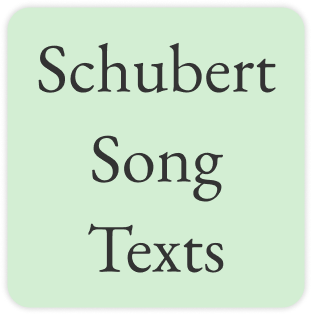Samuel Sauter was by no means the first or only poet to notice the poetic potential of the quail's rhythmically distinctive call. Throughout the eighteenth century, anonymous poets celebrated the bird's piety, by interpreting its call as a command to love, trust and obey the Lord. One version was included in the collection of folksongs known as Des Knaben Wunderhorn, beginning 'Hört, wie die Wachtel im Grünen schön schlägt / Lobet Gott, lobet Gott!' (Hear how beautifully the quail sings in the fields / Praise the Lord!). Other examples share the same poetic metre, and it seems likely that Sauter simply refined pre-existing folksong versions. His version, first published in the almanach Taschenbuch für häusliche und gesellschaftliche Freunde (Pocketbook for domestic and sociable friends) in Heilbronn in 1799, has achieved immortality thanks to Beethoven's and Schubert's settings . . . Through tracing common divergences from the original text, it is possible to demonstrate that Schubert almost certainly used Beethoven's song as the source for the text of his song (D742, published 1822), although there is no evidence of musical borrowing.
. . .
The quail has offered first the poet and then the composer a superb opportunity to exploit tonal analogue. The first stage is to attribute words and hence ideas to the rhythm of birdsong. The second stage is to create and inseparable bond in the ear and mind of the listener between the rhythmic motif and the idea of praising God. A third stage is to reuse the motif in a purely instrumental work and thereby impose extra-musical meaning on the work. This is exactly what occurs in the slow movement of the 'Pastoral' Symphony. The process is lucidly discussed by Barry Cooper (Beethoven and the Creative Process, p. 56), who explains the unexpected inclusion of the quail's song in the orchestral work: 'By incorporating the quail in the symphony Beethoven is recalling the words associated with its call and making this part of the symphony represent nature's song of praise and thanks to God, just as the last movement is mankind's.'
From Paul Reid, The Beethoven Song Companion Manchester University Press 2007 pp. 118-120
☙
Descendant of:
AnimalsTexts with this theme:
- Die Täuschung, D 230 (Ludwig Theobul Kosegarten)
- Abendlied (Groß und rotentflammet), D 276 (Friedrich Leopold Graf zu Stolberg-Stolberg)
- Schlaflied, D 527 (Johann Baptist Mayrhofer)
- Der Wachtelschlag, D 742 (Samuel Friedrich Sauter)


